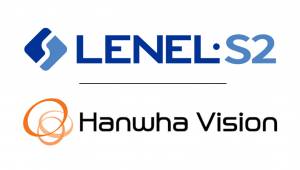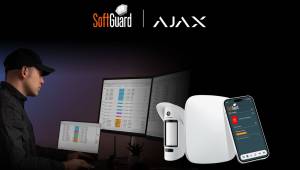In the mid-eighties, the concept of open architecture made it possible to extend the functionality of a computer. Nowadays this type of architecture is not very implemented in security, however some professionals expect that in a few years its use will increase.
By Ana María Restrepo
Open architecture
Previously, architecture only referred to walls, columns, slabs, ceilings, and other elements that came together to create a wonderful space where human beings could inhabit, work or as such, perform any type of activity. Many years later, architecture began to combine other elements that were configuring it as a richer and more specialized profession, which has allowed the creation of other professions such as industrial design or the combination of other techniques such as specialization in urban issues.
But when talking about the evolution of architecture we can not only talk about the physical aspect or construction as such, because due to the importance that this profession took within history, now we also understand by architecture the solid foundations of something, or the set of elements that create new things.
At present, the term architecture is one of the most used within the world of computing and information systems, this is how we can find it within programming, information, software or hardware.
Types of architecture
The world of computing and its computational resources are in a constant evolution due to the needs and demands that users, markets or industries have towards these systems, which have become essential tools for any human being or institution.
Today we could say that we would hardly survive without the Internet, or without a local network that allows us to share information or manipulate business data, but we can also say that if these systems are not related we would be losing precious time to work efficiently. In the computational universe, architecture helps to develop a system and keep it up to date by indicating the functions of its components, their interactions and limitations, that is, it refers to the hardware or software, or both within a computer or computer.
The architecture in a computer can be seen in the hardware when we refer to physical and electronic devices that interact with each other; and in software as the highest-level design of the structure of a system, program, or application. According to wikilearning.com, the main objective of the software architecture is to provide elements that help decision making and, at the same time, provide concepts and a common language that allows communication between the teams involved in a project.
Architecture for security
Within the electronic security industry, the concept of architecture begins to differentiate itself not because it is hardware or software but because it is open or closed architecture, that is, whether or not it allows the integration of multiple manufacturers within a security system.
This type of architecture began to be implemented in electronic security in the mid-eighties, shortly after it began to be used in the computer industry.
To talk about this topic and how it influences security, SECURITY SALES interviewed five industry professionals who explained some basic concepts of open architecture.
Humberto de la Vega, vice president of sales for Latin America and the Caribbean of HID Corporation, explains that the open architecture allows the components of a computer to be compatible in any environment without prejudice to the origin of its manufacturer, both in hardware and software, although he considers that the core aspect of this concept is that the user can modify or take control of the equipment without the need for intervention. from the original manufacturer.
For Jorge Mario Lenis, project manager of El Fuerte, Surveillance and Monitoring, having open architecture systems allows the use of different sources or information systems, provided by different manufacturers that share the mechanism or means of communication in order to execute a specific task.
We can say then that the open architecture makes it possible to make changes in the systems or equipment without needing the manufacturer to give us the license or permission, however in the security industry this concept is not very applied, although, according to Alejandro Angeletti, Business Development Manager for Lenel, the implementation of the open architecture in security is currently in full expansion, due to the business dynamics of end users, as they increasingly demand that security solutions be flexible and that systems adapt to their needs and not to those of the systems.
Working together
The idea of a system with open architecture in the electronic security segment is to allow all security systems to work together, and an integration of different manufacturers is conceived, which not only optimizes and makes more efficient applications, but also improves the security project as such.
In recent years, and due to the boom of the industry around the world, integrators use components of various types, which allow the confluence of security solutions that run under the Linux operating system, such as video surveillance cameras, access controls and intrusion systems; that is why Luis Alberto González, director of PandaID, affirms that in electronic security software is the most used type of open architecture; However, he explains that "there are hardware components that also benefit, such as video cameras with IP connection, which have Linux as an operating system, which results in a lower cost of acquisition by the client. There are also access control solutions that make use of open source databases such as MySql, but in general there is much that remains to be done and will depend largely on how this type of architecture behaves in other sectors of the industry, especially in computing."
Disagreeing with what González thinks, Humberto de la Vega considers that the combination of both types of architecture, hardware and software, in what is known as firmware, is the most used in the industry, although at a particular level, in hardware communication modules are vital and widely used.
For his part, Manuel Rebagliati, regional manager for South America at LRG International, thinks more about the implementation and union of open and closed architecture, so he explains that for Latin American installers and integrators it is essential to have tools that allow efficient integration of closed architecture with open architecture, to reach a full development of integrated security systems which is the global trend.
Software and hardware
As we said before, open architecture can occur in hardware or software, each allowing the interaction of systems or equipment that improve the activities for which they are intended.
As such, the Project Manager of El Fuerte, Surveillance and Monitoring, considers that there is no explicit difference, which does not go beyond the physical aspect, since hardware with open architecture, needs a protocol that is usually described and implemented at the software level so that it communicates with other devices that share open architecture.
Contrary to what Lenis thinks, Humberto says that as far as software is concerned, it can be executed in various environments (computer capacity in memory, processors, communications, etc.) and hardware is understood more as the possibility that a computer has to interact with third-party equipment and peripherals. He also explains that there are some software, which even allow its modification (source code) and sometimes this is attributed to an open architecture, however the reality is that most of these cases are closed systems with proprietary programming languages.
Benefits and costs
The implementation or use of open architecture within the security industry is presented, as De la Vega explains, practically in the subject of communications and integration, because according to him, equipment today has a greater possibility of connecting to third parties from another manufacturer and working properly. "Communication protocols together with firmware are the lifeblood of this process, coupled with the fact that there are international standards that serve as the basis for this purpose, where the best known are those of the IEEE (The Institute of Electrical and Electronics Engineers) and the ISO (International Organization for Standardization)."
For its part, Lenis assures that in the intrusion systems is where this type of architecture can be most reflected, since when installing an alarm panel from one manufacturer you can count on the sensors of another, "which eventually have or provide better features for the detection of intruders", in order to increase the provision of services.
These implementations and integrations that the open architecture allows are reflected in the reduction of costs in equipment and installation, that is, in the basic elements of a CCTV installation, as an example Lenis explains that a recording DVR could be the best on the market having the best performance in frames per second, motion detection software, storage, etc;; and as for the cameras, you could have modest cameras that allow you to make use of at least 60% of the performance of the DRV. "This in competition will be widely reflected in the costs borne by the customer."
In the same way the Director of PandaID thinks, although he affirms that there is a great discussion, since the acquisition costs may be lower but the installation and maintenance costs may be higher. "The security sector in this regard benefits and is affected just like other industries."
But the benefits of open architecture are not only reflected in reducing expenses, but also at the level of integration and interoperation in an intelligent building, where security subsystems participate in the unique control platform of the building, as De la Vega explains, at the same time that it affirms that if the teams involved are not of open architecture, they would surely remain at the level of integration but not of interoperation.
Advances in Open Architecture in Security
Unlike the open architecture, in a closed architecture only the elements that come from the same manufacturer will be compatible with the system, and in some cases they will have to be from the same manufacturer and from the same series or model.
"This clearly hinders not only the integration between systems of different brands but, what is worse, in many cases make them incompatible. Most manufacturers of electronic security systems use closed architectures so that their customers obtain the expansion elements only through them, thus reducing the user's integration options, "says Manuel Rebagliati.
However, there are some security manufacturers that have created alliances with other companies to operate together and improve the user experience in a certain way.
Currently in Latin America the implementation of open architecture has been used in the government sector since it has been tried to establish that all applications are open architecture, however, Luis Alberto González, considers that the region is far from having open architecture solutions in a massive way, because this is a market that is just maturing and that is very influenced by what happens in the IT sector. "With the impulse of manufacturers and the connection of devices such as readers, controllers, video cameras direct to IP points, it will be much more useful to have solutions based on Linux and running applications in java, which may become one of the doors that will open for further implementations in our region."
For his part, Rebagliati states that "due to the high cost of configuring a system with a closed architecture, most of the systems that are "integrated" in Latin America are made virtually through synchronization with the dry contacts or outputs and inputs of the equipment to be integrated, and this is not a real integration, which should be done through software, because closed architectures prevent it since most manufacturers do not deliver the APIs (Application Programming Interface) of their software.
It should be noted, as Jorge Mario Lenis puts it, that "our economies, although growing, cannot be compared with those of other better developed countries; because Latinos always think about the integration and interoperability of systems in order to reduce costs; in addition to the opportunity that different security solutions can interact in the future without losing their commercial value dramatically". "We clearly see this in products such as cell phones, microwave ovens (those that work with any thermal cooking bag), cars (the famous generic parts), etc. It is definitely of high relevance due to the decrease in acquisition costs and the Latin American idiosyncrasy."
For his part, Humberto de la Vega explains that in Latin America we are still in a stage where integration is mostly done, but not much interoperation is done, therefore the benefits of open architecture systems are not used in their entirety, often due to the lack of preparation and knowledge of the integrator himself.
For Angelitti the situation in Latin America is aimed at total and perfect integration, mainly in first-line companies, but little by little second-level companies and government organizations are joining this trend, motivated by the improvement of processes. "Nowadays it is very common to see in the specifications of organizations that the security system must be perfectly integrated via software not only with the CCTV, but also with the management of biometrics in the same database and application, with fire detection systems, with ERP, HR and T&A systems, reaching the most demanding and avant-garde to request integration with logical security systems and SCADA systems"
According to the comments and explanations of these experts, open architecture in the security industry is little used, but its use can benefit both manufacturers, distributors and customers, since it improves the characteristics of the solutions and decreases costs, however, it should be considered, that as progress is made in the subject companies in the industry will use it more widely with the purpose of creating better solutions and integrations.

























Leave your comment